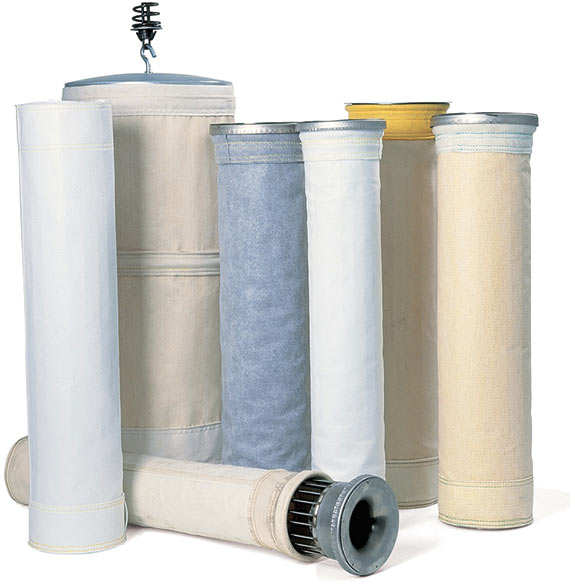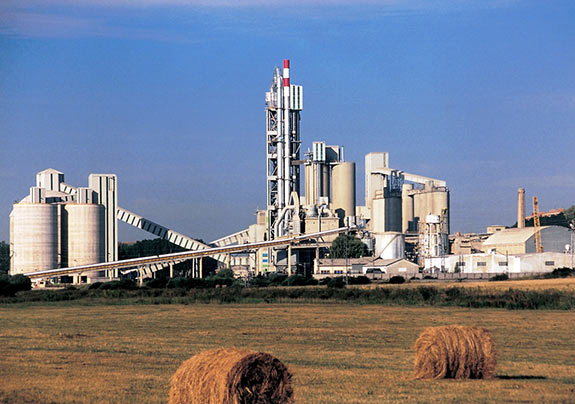The Sum of Its Parts – Part 1
Introduction
Dust collection systems are typically comprised of a ventilation point, ductwork, a dust collector and a fan for producing the desired draft. Historically, this definition of a dust collection system held true, but more recently the basic function of a dust collection system has expanded. Dust collectors are now considered a part of a larger operating system. It has become increasingly important to consider what other components are parts of this larger system and how they perform in relation to each other. As industry processes and manufacturing dynamics have become more efficient, there is a greater awareness
Considering this change in operating philosophy, a typical system could now be defined in various ways. For example, a system may be defined as a conveying system consisting of transport equipment with transfer points, enclosures, a dust collection mechanism, a discharge mechanism and some means of particulate return or particulate storage. In another example, a system may be defined as a process or production system with equipment needed for directional airflow where components may include ductwork, a variable frequency drive, and specific air chemistry related to the process. In both examples, returning the collected particulate as product or storage for disposal is essential. In either scenario, the dust collector is now part of a larger system design and must work cohesively with other components to function properly. Interlocking the dust collectors with the components of the larger system will help:
- Increase system reliability and operational stability.
- Control base operating cost via reduced energy consumption.
- Improve filter life and positively impact particulate emissions.
System reliability
In today’s manufacturing environment, decisions to make capital investments are typically tied to the need for improved performance across the operation and the increased need for system reliability. With system performance and reliability so closely tied to maintaining profitability and controlling base operating cost, more and more manufacturers are examining the impacts of the dust collection system on the overall operation.

Filter bags.
For example, consider a belt conveying system that is rated to transport 110
- Eliminate wasted compressed air or fan usage by running the system when the conveying system is not in use.
- Prevent premature filter fatigue due to unnecessarily cleaning the filter while the system is not in operation.
Fine tuning the operation of the dust collection system is heavily impacted by the manner in which it cleans the filters. Some cleaning systems operate on a timed basis, which is set without considering the operation of the entire system. Data shows that dust collection systems programmed to clean on set time intervals can excessively pulse the filters, contributing to

Cement plants are constantly struggling with fugitive dust and rely on dust collection systems to meet environmental regulations.
Dedusting balancing vs particulate conveying
Commonly, dust collectors are installed in systems to create slight negative capture velocity at each pick-up point but are not balanced at the point of ventilation. In the case of nuisance dust collection, the first principle of dust collection is source self-containment or enclosure. The secondary objective is to capture, collect and return fugitive particulates. To achieve this goal, close attention to system design must be considered when sizing the ventilation fan and the pick-up point(s). Often, systems are designed with a safety factor that will require air flow to be adjusted during the time of installation and commissioning. It is important to determine whether the intent is to capture fugitive particulate or pneumatically convey particulate to the dust collector. In most nuisance dust environments, the goal is to only capture what is necessary for proper ventilation of the system. In this regard, the baghouse is a component of a larger system. In material transport systems, pick-up points can be optimised using proper hood designs, properly sized
Fugitive dust vs process air
The goals of fugitive dust and process air applications are to minimise the grain loading of material to the dust collector. Once the grain loading is known, the dust collector can be designed to accommodate its demand, and technologies can be chosen to better align with the system requirements. In process air applications, the dust collector can become a bottleneck. Many contributing factors come into consideration but assuming all design attributes are correct, the cleaning and operation of the baghouse should be the first point of focus. The ability of the dust collection system to keep up with the airflow and dust loading is critical to meeting its required performance.
Read Part 2 here.
Written by Anthony Johnson, CLARCOR Industrial Air, USA. This is an abridged version of the full article, which appeared in the September 2014 issue of World Cement. Subscribers can view the full article by logging in.
Read the article online at: https://www.worldcement.com/the-americas/05092014/the-sum-of-its-parts-part-1-424/
You might also like
The World Cement Podcast - CleanTech & Venture Capital
Our guest for this episode of the World Cement Podcast is Alfredo Carrato, Venture Capital Advisor for CEMEX Ventures. Listen in to the conversation as World Cement's Senior Editor, David Bizley, and Alfredo discuss the role of venture capital and cleantech in enabling the cement industry's green transition.
Tune in to the World Cement Podcast on your favourite podcast app today.


